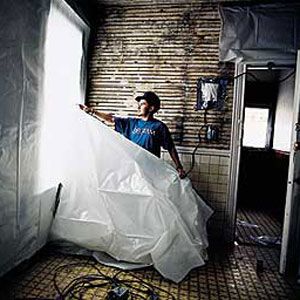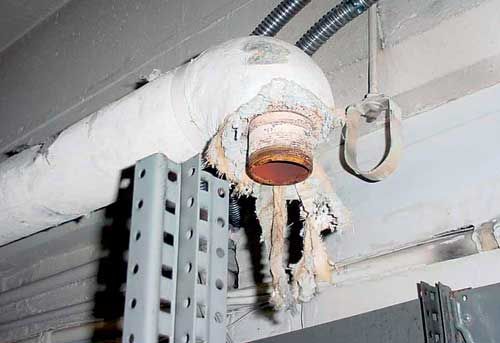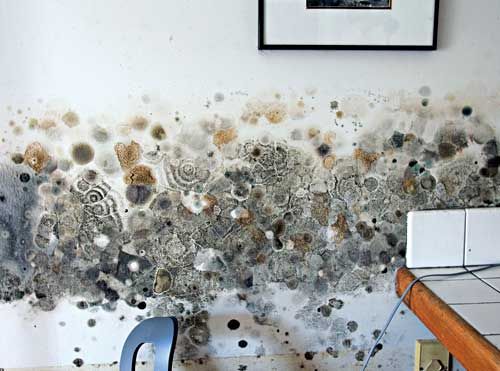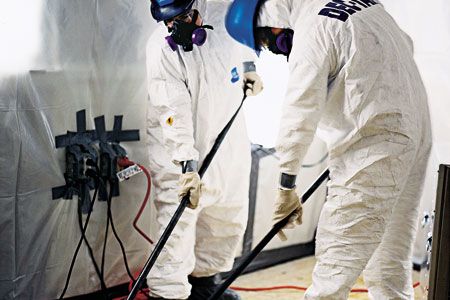Renovating an older home can uncover hidden health hazards such as asbestos, lead, and mold. These toxic materials pose serious risks to your family’s health if not handled properly. This guide will help you identify these dangers in your home and safely remove them. We’ll cover professional abatement techniques, do-it-yourself (DIY) options when appropriate, and preventive measures to keep your home healthy for years to come.
Understanding the Dangers of Household Toxins
Before tackling any removal, it’s crucial to understand the health risks associated with asbestos, lead, and mold. When disturbed or left untreated, each of these toxins can cause severe health problems.
The Health Risks of Asbestos
Asbestos, once prized for its fire resistance, can cause serious lung damage if you inhale its fibers. Exposure may lead to asbestosis, scarring of the lungs, or even cancer. Asbestos is particularly dangerous when it becomes “friable,” meaning it can crumble and release fibers into the air.
Lead Poisoning: A Silent Threat
Lead exposure, especially in children under 6, can result in brain damage, hearing loss, and developmental issues. Lead was commonly used in paint until 1978, making older homes a potential risk. Even small amounts of lead dust from deteriorating paint can be harmful if ingested or inhaled.
Mold: More Than Just an Eyesore
Mold spores can trigger allergies, asthma attacks, and respiratory problems. In rare cases, certain types of mold may cause more severe health issues. Mold thrives in damp environments and can spread quickly if left unchecked, making prompt identification and removal essential.

Identifying Asbestos in Your Home
Recognizing asbestos-containing materials is the first step in protecting your family. While a professional inspection is the most reliable method, there are visual cues you can look for.
Common Asbestos-Containing Materials
The construction industry used asbestos until 1972. It may be present in the following:
- Insulation around pipes and in attics
- Plaster and joint compounds
- Roofing and siding materials
- Textured ceiling paints
- Vinyl floor tiles and adhesives
Signs of Asbestos Deterioration
While intact asbestos doesn’t pose an immediate threat, damaged materials can release harmful fibers. Look for:
- Crumbling or cracked surfaces
- Water damage on potentially asbestos-containing materials
- Visible fibers or dust around suspicious materials
If you suspect asbestos, don’t disturb the material. Contact a licensed inspector for testing and advice on the next steps.

Detecting and Assessing Lead Hazards
Lead paint remains a common issue in homes built before 1978. Identifying and addressing lead hazards is crucial, especially if you have young children.
Where You Commonly Find Lead Paint
You can usually find lead paint on:
- Doorframes and baseboards
- Exterior siding
- Stairs and railings
- Windowsills and frames
Professional Lead Testing Methods
While home test kits are available, they’re often unreliable. The Environmental Protection Agency recommends professional testing for accurate results. A certified lead inspector can:
- Provide a detailed report of lead hazards in your home
- Take paint chip samples for laboratory analysis
- Use X-ray fluorescence (XRF) devices for nondestructive testing
Remember, even if someone repainted your home, underlying layers may still contain lead. Professional testing is the safest way to assess your risk.

Recognizing Mold Infestations
Mold can grow in any damp area of your home. Knowing how to spot mold growth can help you address the problem before it spreads.
Visual Indicators of Mold Growth
Look for the following:
- Discoloration on walls, ceilings, or floors
- Peeling or bubbling paint
- Water stains or warping of materials
Mold can appear in various colors, including black, green, white, or orange. You should investigate any suspicious growth.
Using Your Nose: The Musty Smell Test
Often, you can smell mold before you see it. A persistent musty odor, especially in basements, bathrooms, or areas with poor ventilation, can indicate hidden mold growth.

Safe Asbestos Removal Techniques
Asbestos removal is a delicate process that often requires professional expertise. However, there are situations where homeowners can take precautions to manage asbestos safely.
When To Call a Professional Abatement Team
Professional asbestos abatement is necessary when:
- Large areas are affected
- The asbestos is friable (easily crumbled)
- The material will be disturbed during the renovation
Abatement pros use specialized equipment and follow strict safety protocols. They create sealed containment areas, use high-efficiency particulate air (HEPA) filtration, and properly dispose of asbestos-containing materials.
DIY Asbestos Management for Non-Friable Materials
In some cases, you can manage non-friable asbestos without removal. This might involve:
- Covering with new flooring or wallboard
- Encapsulation with special sealants
- Regular inspections to monitor the condition
Always check local regulations before attempting any DIY asbestos management. Some areas require all asbestos work to be done by licensed professionals.
Effective Lead Paint Remediation Strategies
Dealing with lead paint requires careful consideration of the safest and most effective removal methods.
Encapsulation: A Noninvasive Approach
Encapsulation involves covering lead paint with a special sealant. This method prevents lead dust from forming, is less disruptive than removal, and can be a cost-effective solution for large areas. Some products even provide a durable barrier and have a bitter taste to deter children from chewing on painted surfaces.
Safe Paint Removal Methods
When removal is necessary, safe techniques include:
- Employing infrared paint removers such as the Speedheater, which softens paint without creating harmful vapors
- Using liquid strippers to keep lead particles contained
- Wet sanding or scraping to minimize dust
Always use proper protective gear, including HEPA respirators and disposable coveralls, when working with lead paint.
Tackling Mold Problems Head-On
Mold removal strategies depend on the extent of the infestation and the affected materials.
Small-Scale Mold Cleanup Procedures
For areas under 10 square feet, homeowners can often handle mold cleanup by doing the following:
- Using soap and water or a diluted bleach solution on hard surfaces.
- Applying borate-based products on wood to inhibit future growth.
Large-Scale Mold Remediation Process
Extensive mold growth requires professional remediation. The process typically involves:
- Containing the affected area to prevent spore spread.
- Removing and disposing of contaminated materials.
- Cleaning and disinfecting the area.
- Addressing the underlying moisture issue to prevent recurrence.
Professionals use specialized equipment such as HEPA air scrubbers and antimicrobial treatments to ensure thorough remediation.
Preventing Future Toxin Exposure
After removing toxins, taking steps to prevent their return is crucial for maintaining a healthy home environment.
Maintaining a Dry, Well-Ventilated Home
Do the following to help prevent mold growth and reduce the deterioration of materials containing asbestos or lead:
- Clean and maintain gutters and downspouts.
- Ensure proper ventilation, especially in bathrooms and kitchens.
- Fix leaks promptly.
- Use dehumidifiers in damp areas.
Regular Inspections and Maintenance
Schedule regular inspections to catch potential issues early. You should also:
- Check for signs of water damage or mold growth.
- Keep an eye on painted surfaces for chipping or peeling.
- Monitor the condition of known or suspected asbestos-containing materials.
Consider having a professional inspection every few years, especially if you live in an older home.
Essential Safety Gear for Toxin Removal
Proper safety equipment is nonnegotiable when dealing with household toxins.
Protective Clothing and Respirators
Essential gear includes:
- Disposable coveralls with hood and booties
- Eye protection
- Gloves suitable for the task (e.g., chemical-resistant for paint stripping)
- HEPA-filtered respirators appropriate for the specific hazard
Proper Disposal of Contaminated Materials
Follow local regulations for disposing of hazardous materials. This includes:
- Checking with your local waste management facility for proper disposal procedures
- Double-bagging asbestos waste in specially marked bags
- Using sealed containers for lead paint chips and dust
Improper disposal can lead to fines and environmental contamination.
Our Conclusion
Removing asbestos, lead, and mold from your home is a serious undertaking that requires careful planning and execution. While informed homeowners can handle some tasks, many situations call for professional expertise to ensure safety and compliance with regulations. By understanding the risks, identifying hazards, and taking appropriate action, you can create a healthier living environment for your family.

